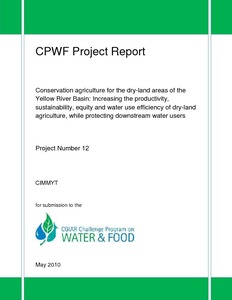Conservation agriculture for the dry-land areas of the Yellow River Basin: Increasing the productivity, sustainability, equity and water use efficiency of dry-land agriculture, while protecting downstream water users
Soil erosion is a major problem in the Yellow River Basin: the river is one of the most
sediment-laden in the world. Although there is a rainfall gradient from 750 mm in southern
Shandong, to 200mm per year in northern Ningxia, most of the rainfed cropping area is in
regions with more than 400 mm per year – it is here that the project concentrated.
Conservation agriculture (featuring reduced or zero tillage, mulch retention, crop rotations
and cover crops) offers a possible solution to problems of soil erosion and low crop



